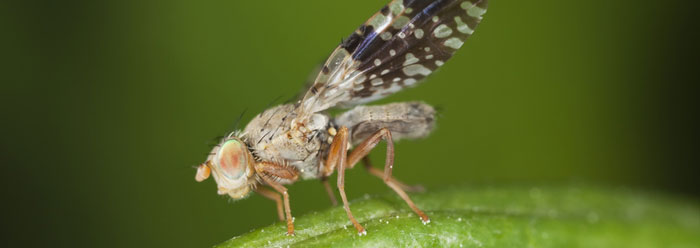In 1976, evolutionist Richard Dawkins eloquently described how he thought life on earth was characterized by selfish genes competing for propagation within the genomes of countless creatures.1 Since then, science has described unique segments of DNA called transposons that are able to insert copies of themselves into plant and animal DNA. Are transposons trying to take over their host genomes, thus demonstrating the selfish behavior described by Dawkins?
The answer is no. These mobile genetic elements—also called "jumping genes" for their ability to move from place to place—don't just randomly invade a genome. Instead, they are now well-known for inserting copies of themselves into very specific places on chromosomes. Most animals' genomes are loaded either with recently acquired and active transposons, or with remnants of transposons acquired long ago.
Perhaps the best-studied transposons are the "P elements" found in fruit flies. One still-active P element transposon appears to have been introduced into populations of the common fruit fly by another fruit fly species about 80 years ago. A recent study of P elements published online in the Proceedings of the National Academy of Sciences appears to have discovered the source of the "highly nonrandom selectivity of P element insertion"2
A Carnegie Institution for Science news release reported:
What many P insertion sites share in common is an ability to function as starting sites or "origins" for DNA duplication. This association between P elements and the machinery of genome duplication suggested that they can coordinate their movement with DNA replication.3
Somehow, these transposons "know" exactly where to insert themselves. And although they "remain highly 'infective' today,"3 they eventually stop "jumping" into new places in the fruit fly genome through inherited mechanisms of protein truncation and "piwi-interacting RNA" complexes.2 In other words, they eventually stop because of well-designed components in the host cell that interact very precisely with the transposons.
Since their discovery, evolutionists have been trying to work transposons into an overall evolutionary scheme of genetic development. The study authors asked, "Does a selfish drive to increase copy number by replication timing influence the evolution of genome organization?"2 They briefly discussed why this might be true, without addressing the glaring reasons why it could not possibly be true.
First, transposons target specific sites. If they were truly "selfish," they should show no preference for location, but would invade the genome anywhere they could to increase their own numbers. But if they were created by design to serve a particular purpose, transposons might be inserting themselves into these specific sites for a biologically significant reason, such as gene regulation or DNA stabilization. But this possibility was not even mentioned in the PNAS study.
Also, the transposons' copy numbers are controlled and eventually stopped by inherited cellular mechanisms that seem to "understand" exactly what the transposon is doing. If the transposon is selfishly competing with the genome in order to survive and reproduce, as Dawkins described, then why does the transposon interact with its host genome in a cooperative manner that fits like a hand in a glove?
Genes do not behave "selfishly"—in fact, most genes on earth are plant genes that serve largely selfless roles.4 And even "jumping genes" do not exhibit signs of selfishness. Genes do not struggle against one another, but at almost every level have been found to mesh with coordinated, well-planned precision to perform tasks that serve their larger organisms. And that behavior could only have resulted from deliberate engineering by a superior Designer.
References
- Dawkins, R. 1976. The Selfish Gene. Oxford: Oxford University Press.
-
Spradling, A. C., H. J. Bellen and R. A. Hoskins.
Drosophila P elements preferentially transpose to
replication origins. Proceedings of the National Academy of Sciences. Published online before print September 6, 2011. - A "Jumping Gene's" preferred targets may influence genome evolution. Carnegie Institution for Science news release, September 6, 2011.
- Demick, D.. 2000. The Unselfish Green Gene. Acts & Facts. 29 (7).
* Mr. Thomas is Science Writer at the Institute for Creation Research.
